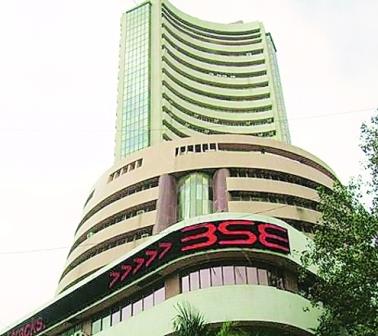
On Friday, the government had announced a slew of measures, including relief measures to auto sector, roll back of surcharge imposed on FPIs and super rich domestic investors, and 70,000 crore rupees capital infusion to the ailing public sector banks. These announcements were successful in lifting the pall of gloom that has been hovering over the equity markets lately. By Tuesday, FM’s sentiment boosting proposals had lifted Nifty and Midcap150 indices to 4.7 and 4.3 percent respectively from the Friday’s lows. The rise was more pronounced in some of the troubled sectors, with Auto, Bank Nifty and Financial Services indices rising 5.6 percent, 6.5 percent and 7.3 percent respectively in the same period, but none of these sectors were able to hold on to the gains in the subsequent days.
Despite easing tax norms, FPIs are still concerned about growth
While the budget announcement of surcharge on FPIs may have set off an avalanche, the growth concerns certainly have been the major reason for the pull-out from Indian equities. Over 15700 crore rupees worth equities were taken out from Indian market in August alone. Of this, 1600 crores alone were taken out in the first two days after FM’s announcement ever even while markets were on a steep rally, suggesting that sentiments may have improved on the face, but FPIs are not willing to commit unless earnings visibility improves. Incidentally, June quarter’s tepid earnings have seen EPS downgrades across board. Some of the sectors, especially, auto and telecom are facing cyclical issues, while the bright spots have been limited to insurance, certain private retail banks as well as consumer staples and durables.
Rupee is still weakening
Historically August has been a weak month for rupee. In the last 5 years, except for 2017, where the fall happened in September, rupee has depreciated 3.79 percent, 0.3 percent, 3.7 percent and 4.54 percent in 2015, 2016, 2018 and 2019 respectively. But apart from the seasonality reason, rupee’s extended weakness this month can be attributed to two aspects.
Firstly, the pressure on rupee has continued through the month of August. Oil and Gold, both of which add to the import bill has been on the rise this month. While Brent crude has risen more than 10 percent from the month’s low of USD 55.88 dollars per barrel, dollar denominated gold prices have also risen more than 10 percent to USD 1540 per troy ounce, the highest level since April 2013. Add to this, the foreign institutional investors’ continued selling of Indian equities which has exceeded 15,700 crore rupees in August so far. In addition to this, dollar index has also been firm amidst US China trade war tensions.
What more needs to be done?
The most significant feature of these measures has been the fact that they are not designed to bring in any more fiscal pain. Investor confidence would be bolstered by the Government’s commitment to not deviate much from the FRBM target of 3% since historically, off budget measures have usually posed significant challenges in meeting the fiscal target. The government’s target for FY20 fiscal deficit is 3.34% of GDP.
Thus, market by now has come to accept the fact there would be no major monetary stimulus plans from the government. It is into this expectation realm that FM’s announcement has fallen into. Does it mean, more could not be expected?
A report by Business line quoting the Insolvency and Bankruptcy Board of India (IBBI) website puts the average recovery amount realised by financial creditors as a percent of their claims to be poor at 20-25 percent, after excluding a few accounts. This brings into perspective, the capital infusion of 70,000 crore rupees proposed on 23rd August. This amount was in fact promised several months earlier, so it should not have been a surprise anyway, but its upfront payment now will end up only as a means to filling the provisioning needs, unless there are more recoveries happening under IBC. In this environment, where there is already stress on net interest margins (NIMs), banks are less likely to act on government’s nudge to transmit more across the board to the borrowers, when RBI rate cuts rates. Such a ploy to depress real interest rates in order to boost private consumption which accounts for nearly 60 percent of GDP, may turn counterproductive, and could potentially lead to another down cycle for banks. While the need for strengthening of banks can never be overstated, equal attention, if not more, especially in the present scenario, needs to be given on freeing up locked resources or bringing about procedural easiness. Prime example is that of GST. While GST was one of the boldest reforms of the government with the intention of bringing about a uniform tax code across the country, ease of doing business has suffered, while also stifling tax revenues. For this to change, GST compliance issues have to be addressed. Strengthening RERA, giving it more teeth, and instilling life into stalled infrastructure projects is another area, but is one that FM has promised to address soon.
Meanwhile, global equity universe is certainly in an uncertain phase now. The FPIs are certainly nervous and they have not been buyers in Indian equities despite FM’s relief measures, suggesting that they continue to be in a risk off mode. With US-China trade war and Brexit keeping global markets edgy, bond yields across the world had been falling, signalling worst case scenarios. In the event of that, government’s measures, both the ones announced and those in the pipe line, will serve to ensure that India takes the least hit among the EMs, and become attractive again.
First published in Quartz India.
